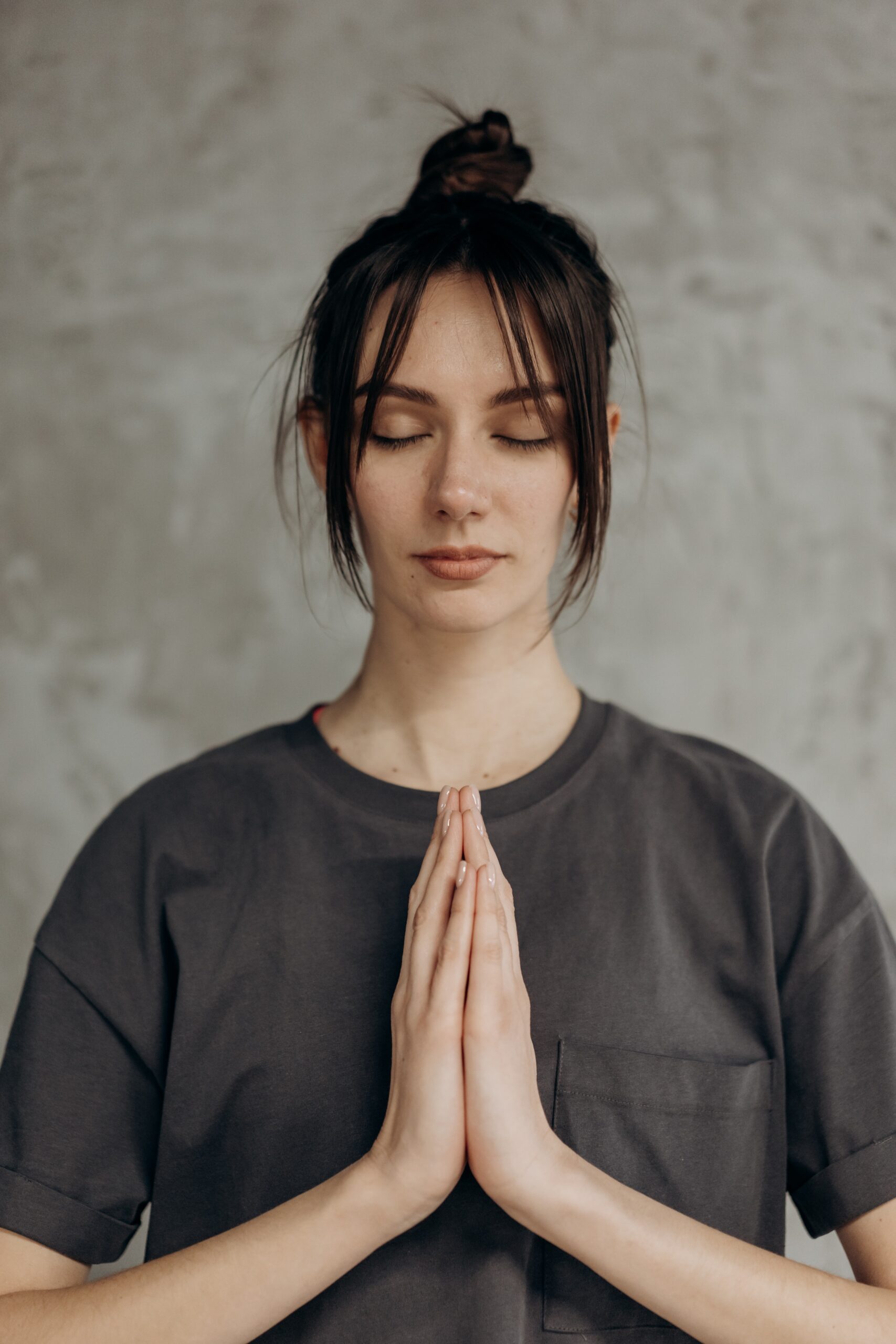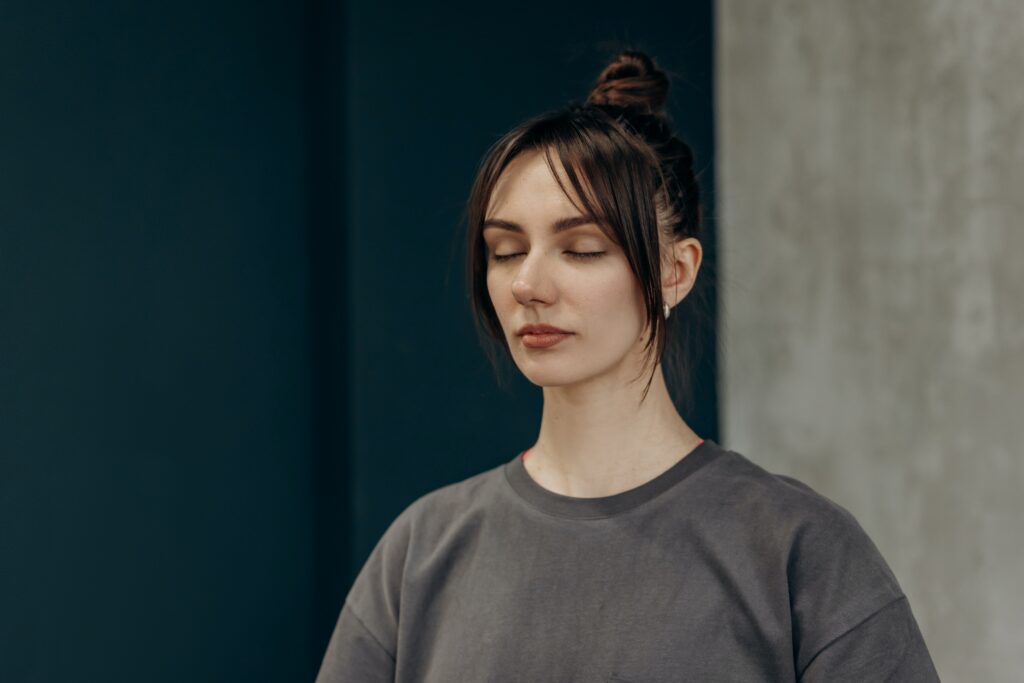Meditation for Beginners
The meditation techniques we teach are simple to practice and can be incorporated into daily life.
“The value of meditation is that it not only improves the quality of one’s life, but also improves the quality of the environment.”

BENEFITS OF MEDITATION
Physical aspects
Different studies have shown not only beneficial differences in brain function in both expert meditators and beginners but also beneficial effects on:
- Cardiovascular system
- Immune system
- Relief of chronic pain, psoriasis, fibromyalgia, cancer treatments.
- Psychological aspects
Meditation stimulates areas of the nervous system related to positive emotions. It increases the secretion of serotonin and endorphins. The activity map of the brain changes. And this is great news because it means that with proper training and perseverance we can de-model ourselves to be happier and healthier.
In this area studies have proven the effectiveness of meditation in:
- Stress and anxiety reduction
- Prevention of depression
- Improving concentration
- Combating eating disorders
- Emotional balance
- Drug addiction and alcohol consumption
Despite the benefits that meditation brings, it should not be forgotten that meditation was born and developed as a spiritual practice and that at its core its main objective is to help us to unfold our inner spiritual potential.

5 KEYS TO START MEDITATING
Meditation does change the personality. It takes away the hardness that is there and brings that mellowness which love inspires. It teaches how to love, the meaning of love, and even how to become love. That is the basic change required in the human being of today.
Close your eyes, let your breath follow its natural rhythm and keep a slight awareness that you are breathing. Let the thoughts run freely without paying attention to them, as if it were the background music of the supermarket, which is there but you do not pay any attention to it, just keep a slight awareness of your breathing, and let it follow its natural rhythm, stay like that for a minute or two and get up slowly, continue with what you were doing.
When sitting, it is necessary to pay attention to the breath and allow the muscles to relax by letting them fall with the mind. This encourages relaxation and concentration on the breath for a minute or two. Afterwards, you can resume what you were doing previously.
When walking, put your attention on the breath and put a rhythm (inhalation, exhalation) with the walking. For example, add, two steps you breathe in, three steps you breathe out. The main thing is to put both in harmony, so it will always be better if practiced during a pleasant walk or in nature.
Sight is one of the senses to learn to educate when it comes to meditation. Fix your gaze on a beautiful object, such as a flower or a sunset and contemplate the beauty. Let your gaze go from one color to another, let your mind flow continuously over the object as you observe it, for a minute or two as well.
Sit in a relaxed posture and go through your body perceiving the sensations you receive from the soles of your feet up to your head and back down again. During these two or three minutes, the person should be carried away by the body sensations and calmness.
Meditation for Beginnerss Courses Available
21-day Meditation Challenge
Starter Meditation Kit
MEDITATION AND MINDFULNESS

In recent decades, science and academia have studied various meditation protocols and spiritual practices, and have focused their attention on the wisdom coming from many contemplative and spiritual traditions of various cultures, particularly Eastern cultures. In the study by Lutz, Dunne, and Davidson, “Meditation and the Neuroscience of Consciousness: An Introduction” The Cambridge Handbook of Consciousness. Cambridge University Press, 2007: 499-552. These meditation techniques and spiritual practices have been classified and divided into three main groups:
- Concentration Techniques – Objective: to quiet the mind.
- Open Presence Techniques. – Objective: to maintain awareness in the here/now by allowing a non-judgmental flow of thought.
- Loving Kindness/Compassion Techniques or what has been traditionally referred to as devotional practices. Objective: To open the heart.
In this course you will learn techniques of each of these three kinds, easy to learn and effortless to practice
METHOD AND COURSES
We call this method Path of Unfoldment – PoU Method. We call it unfoldment as the results resemble to “unfolding” of what is already there, as it has a lot to do with being oneself in an unfolded way. It means that the human heart is by nature good, and we unfold that goodness within ourselves.
What you will learn
In this course you will learn a meditation and mindfulness discipline to implement in your day to day life. You will be supported every day with our mobile app that you can download from your mobile App Store and week by week you will gradually introduce the discipline of meditation in your daily life.
Frequently asked questions
What is mindfulness meditation?
It is a series of techniques that are focused on keeping conscious awareness in the here and now, and in the moment you are experiencing your thoughts, your emotions, in a continuous way in such a way that makes you to be in the present moment.
What kind of people practice it?
We have been teaching meditation for 40 years and we have met all kinds of people: actors, civil servants, professional experts, psychologists, school teachers, prison inmates? IN essence ordinary people and everyone looking for an improvement in their lives. The average age is between 25 and 50, but meditation can be practiced by everyone, regardless of age and social class.
We teach in prison, we have a mindfulness program for inmates, and they are delighted. It helps them to cope well with difficult times in prison. We also have projects in schools, where we practice mindfulness to combat attention deficit. Now society is full of technology and facilities, and children have not developed those natural abilities of the mind to focus on the moment, and this is a technique that helps them to develop it.
What types of exercises are done?
We practice different yoga techniques, walking, silence or breathing techniques. We teach techniques that can then be applied in the person’s daily life, so that the mind can function correctly, relating thoughts and emotions. You live life every day the same, but there are always three things: what you do, what you think and what you feel doing things. Dealing with each of these three areas is up to each person. We help you deal with thoughts, actions and emotions/feelings during each day of your life. We teach you to live life one day at a time.
What are the benefits?
This type of exercise modifies the brain, reduces stress, is a good therapy for depression, improves the immune system and the skin. Studies show that meditation is the best natural cosmetic, and that its results are noticeable after eight weeks of practice.
Our method is also focused on opening the heart, opening yourself up to the experience of Love, of that LOve that in classical Greece was called Agape
Does it help to take life differently?
You begin to look at things in a different way, it allows you to respond instead of reacting, you learn to have that time to make decisions.
There are different types of meditation, which ones do we teach?
We teach from a scientific point of view. There are different classical names, such as Buddhist vipassana meditation, which for another religion has a different name but it is the same technique. We do not base ourselves on any religion or style, we teach everything that science has collected and studied, and we teach it with an emphasis in the spiritual dimension of human being experience.
Do you believe that all meditation techniques and schools are equally beneficial?
In essence yes, but there are a lot of improperly trained people who teach and do not know what they teach. There are not better and worse methods and techniques, but there are bad teachers. Learning as a student is not the same as teaching others. The latter requires more training and experience, and it takes a long time to acquire it. In our organisation all teachers have at least 12 years of experience and receive an in depth training during 3 years.
Is it necessary to be an expert meditator to experience the benefits?
It is not necessary to be an accomplished meditator to enjoy the benefits of meditation. Anyone who practices meditation regularly will, in a short time, begin to notice the results. Thanks to meditation we can develop qualities such as positive thinking, empathy or serenity in times of crisis and keep away negative thoughts and emotions. Because the practice of meditation leads to a change of perception of reality.
When is the best time to start?
At the beginning and end of the day. “Meditating will give us the rhythm and discipline necessary to focus our attention on the real place where our life takes place, in the present,” explains Leonato. Meditation, he adds, teaches you to keep your attention on the moment in which you are existing and to understand, without judgment, the nature of that reality.
In a group or alone. Mindfulness can be practiced with or without company, and it is up to the person to choose how to do it. Sometimes, says the expert, it is enriching to have a group of friends who meditate to maintain motivation and discipline, while strengthening the bonds of friendship. In addition, a good meditation teacher will allow you to learn a protocol that combines various techniques, from concentration to open presence and loving-kindness, along with other cognitive-behavioral practices that serve as a tool for coping with day-to-day life. “There are also many schools, but as it is an unregulated teaching, there is a lot of intrusion and you have to choose well the place where to start”.


